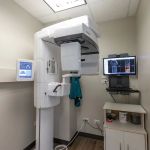The Benefits of Using a Soft-Bristled Toothbrush: Why You Should Make the Switch
- 1. What is a Soft-Bristled Toothbrush?
- 2. The Key Benefits of Using a Soft-Bristled Toothbrush
- 3. Who Should Consider Using a Soft-Bristled Toothbrush?
- 4. Soft vs. Hard Bristles: Which is Better for Your Teeth?
- 5. Real-Life Stories: How Soft-Bristled Toothbrushes Helped
- 6. How to Choose the Best Soft-Bristled Toothbrush for You
- 7. Final Thoughts: Why You Should Switch to Soft Bristles Today
1. What is a Soft-Bristled Toothbrush?
A soft-bristled toothbrush is designed with bristles that are gentle on your gums and enamel. Unlike their medium or hard counterparts, soft bristles are specifically made to minimize wear and tear on sensitive areas of your mouth. Whether you're new to using soft-bristled toothbrushes or just want to understand their full benefits, this guide will provide you with everything you need to know about why they are an excellent choice for oral health.
2. The Key Benefits of Using a Soft-Bristled Toothbrush
Using a soft-bristled toothbrush comes with a wide range of advantages that help preserve both your dental and gum health. Here are some of the most important benefits:
2.1 Gentle on Sensitive Teeth and Gums
If you suffer from sensitive teeth or gums, a soft-bristled toothbrush is ideal. The bristles are gentle enough to clean your teeth without causing irritation or discomfort, which is crucial if you’ve experienced gum recession or irritation from using firmer brushes.
2.2 Helps Prevent Gum Recession
Brushing too hard with a toothbrush that has stiff bristles can lead to gum recession, exposing the sensitive roots of your teeth. Over time, this can cause further damage and even tooth loss. Soft bristles ensure a gentler touch, reducing the risk of gum recession and preserving your oral health.
2.3 Effective Cleaning without Damaging Enamel
Hard bristles may appear to be more effective at removing plaque, but they can wear down the tooth enamel over time. Soft bristles clean your teeth effectively while being kinder to the enamel, which is essential for long-term dental health.
2.4 Ideal for Post-Dental Work and Sensitivity
After procedures like teeth whitening, fillings, or gum treatments, your mouth may be more sensitive. A soft-bristled toothbrush ensures that your teeth and gums are cleaned without causing additional discomfort or aggravating any areas of sensitivity.
3. Who Should Consider Using a Soft-Bristled Toothbrush?
While soft-bristled toothbrushes are generally recommended for most people, there are specific groups that will particularly benefit from using them:
3.1 People with Sensitive Teeth
If you often experience pain when eating hot or cold foods, or if your teeth feel sensitive after brushing, a soft-bristled toothbrush can help reduce discomfort by providing a gentler touch while still cleaning effectively.
3.2 Those with Gum Recession or Gingivitis
For individuals with gum disease, gingivitis, or gum recession, soft bristles are the best choice. They can help maintain oral hygiene while minimizing further damage to your gums.
3.3 Children and Elderly Individuals
Children and older adults may have more delicate gums or teeth, making them more prone to injury from hard bristles. A soft-bristled toothbrush is ideal for their needs, as it offers a gentle yet effective clean.
4. Soft vs. Hard Bristles: Which is Better for Your Teeth?
When choosing a toothbrush, it’s important to understand the differences between soft and hard bristles. Here’s a comparison to help you decide which is right for you:
4.1 Hard Bristles: Potential Risks
Hard bristles can feel more effective when you scrub your teeth, but they can cause long-term damage. The abrasive nature of hard bristles can wear down enamel and irritate gums, especially if you brush too aggressively. In extreme cases, this can lead to gum recession and increased sensitivity.
4.2 Soft Bristles: The Safer Choice
Soft bristles are the safer option for everyday use. They provide an adequate clean without risking damage to your gums or enamel. For most people, soft bristles are sufficient for maintaining optimal oral health.
4.3 Finding a Balance
It’s important to find the right balance for your brushing technique. Brushing too hard, regardless of bristle hardness, can lead to issues. Soft bristles combined with gentle brushing will keep your teeth and gums healthy without the risks associated with harder brushes.
5. Real-Life Stories: How Soft-Bristled Toothbrushes Helped
Here are a few real-life examples that highlight the positive impact soft-bristled toothbrushes can have:
5.1 Emily’s Journey to Healthier Gums
Emily had been using a hard-bristled toothbrush for years, but her gums started to recede, and she noticed increased tooth sensitivity. After switching to a soft-bristled toothbrush, she saw a significant improvement in her gum health and sensitivity. Her dentist was pleased with the positive changes and recommended she continue using soft bristles for long-term gum protection.
5.2 Tom’s Sensitivity Relief After Dental Work
Tom had recently had a root canal and was dealing with heightened tooth sensitivity. His dentist recommended using a soft-bristled toothbrush to avoid aggravating the sensitive area. Since making the switch, Tom has experienced less discomfort and a more enjoyable brushing experience.
6. How to Choose the Best Soft-Bristled Toothbrush for You
When selecting a soft-bristled toothbrush, consider the following factors to ensure you’re making the best choice for your needs:
6.1 Bristle Quality
Look for toothbrushes with high-quality soft bristles. Ensure they are designed for durability and effective cleaning while being gentle on your teeth and gums.
6.2 Handle Design
The handle should be comfortable and provide a firm grip. A well-designed handle helps you maintain control during brushing and ensures a more effective clean.
6.3 Additional Features
Some soft-bristled toothbrushes come with extra features like angled bristles, which help reach areas that are typically hard to clean. Others may include a tongue cleaner or ergonomic designs to improve your brushing technique.
7. Final Thoughts: Why You Should Switch to Soft Bristles Today
Using a soft-bristled toothbrush is an easy and effective way to protect your teeth and gums. If you're looking to reduce sensitivity, prevent gum recession, and ensure your enamel stays intact, switching to a soft-bristled toothbrush is a smart move. If you’re ready to take your oral care to the next level, visit Dentistry Toothtruth for more tips on selecting the right toothbrush and achieving the healthiest smile.







 Drs. Brian & Allen P. Shapiro5.0 (3 review)
Drs. Brian & Allen P. Shapiro5.0 (3 review) Advanced Family Dental & Orthodontics4.0 (130 review)
Advanced Family Dental & Orthodontics4.0 (130 review) Gentle Dental4.0 (210 review)
Gentle Dental4.0 (210 review) Pro Dentists of Buford4.0 (575 review)
Pro Dentists of Buford4.0 (575 review) Millennium Park Smiles4.0 (179 review)
Millennium Park Smiles4.0 (179 review) International Dental of Joliet4.0 (93 review)
International Dental of Joliet4.0 (93 review) The Importance of Oral Health Education During Pregnancy for a Healthy Pregnancy
The Importance of Oral Health Education During Pregnancy for a Healthy Pregnancy Best Tips for Brushing Your Teeth Properly for Healthy Gums: Essential Techniques for Oral Health
Best Tips for Brushing Your Teeth Properly for Healthy Gums: Essential Techniques for Oral Health Why Skipping Dental Checkups Can Lead to Bigger Oral Health Problems
Why Skipping Dental Checkups Can Lead to Bigger Oral Health Problems Advantages of Porcelain Dental Restorations
Advantages of Porcelain Dental Restorations How Can Diabetes Cause Tooth and Gum Problems? Preventing and Managing Oral Health Issues
How Can Diabetes Cause Tooth and Gum Problems? Preventing and Managing Oral Health Issues Healthy Habits for Promoting Good Oral Health and Hygiene: Tips for a Healthy Smile
Healthy Habits for Promoting Good Oral Health and Hygiene: Tips for a Healthy Smile